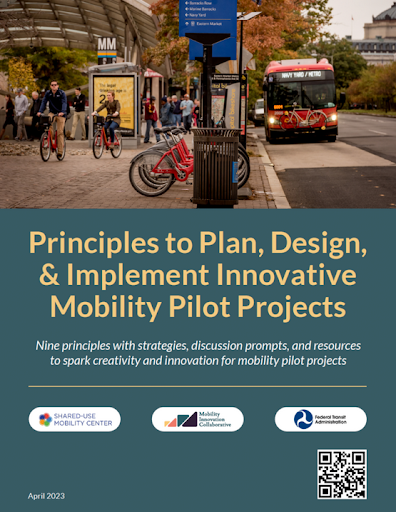A Guidebook for Mobility Innovation
By Shared-Use Mobility Center
Jun 7, 2023
The Mobility Innovation Collaborative (MIC) is pleased to announce our new resource to guide mobility innovation: Principles to Plan, Design, & Implement Innovative Mobility Projects.
View the guide HERE:

About this guide
Over the past year, the MIC team conducted industry-wide research on mobility innovation to understand what excites, challenges, and stumps people in the world of mobility innovation. We turned to leaders in the mobility industry to understand their needs and gathered qualitative data from innovators in the field through expert interviews, surveys, and workshops.
Through these efforts, we developed this guidebook to better plan, design, and implement innovative mobility pilot projects. The guidebook provides a series of principles to better plan, design, and implement innovative mobility pilot projects. Each principle has supporting information, including strategies to execute the principle, examples of the principle in action, resources about the principle, and questions to prompt team discussions.
The principles included in this guidebook summarize a wide range of experiences from stakeholders working in different types of innovative mobility projects. As a result, this guidebook intends to serve a variety of mobility pilot projects and organizational change processes, as well as to support as many mobility professionals working in different contexts as possible. SUMC’s hope is that this guidebook will help teams plan, design, and implement innovative mobility pilot projects better.
This guidebook is intended for anyone in the transportation sector who knows that their community’s transportation systems can do better and are ready to develop or implement new ideas. It intends to serve a variety of mobility projects, to foster organizational change processes, and to support as many mobility professionals working in different contexts as possible.
Acknowledgements
The Shared-Use Mobility Center (SUMC) is grateful to the Federal Transit Administration, who made this work possible through cooperative agreements with SUMC in support of their mobility innovation initiatives. SUMC also thanks all MIC grantees who participated and informed this guidebook. Content and conclusions of this report are solely those of SUMC.